
By Mike Cobb
Tom Rush has been performing as a folk singer since the mid 1960s. He is well known both for his original music and for covering classics by contemporaries such as Joni Mitchell. Nancy Young from Gatehouse News Service said of Rush, “His voice is still molasses, smoke and licorice; his fingers still coax magic and thunder from every guitar string, and he’s as engaging a storyteller as he ever was.”
Now in his sixth decade of delighting audiences with his gift for storytelling through song, Rush is still going strong. He’ll play at 7:30pm this Friday, December 9th, at The Schimmel Center in New York City, where he’ll be supported by Matt Nakoa and Seth Glier. In advance of the special showcase, we spoke to the legend about Club 47, his recent burst of creativity, teasing songs out of the ether and helping “whippersnappers” like Nakoa and Glier reach a wider audience.
Read the conversation below, and head HERE to enter to win a pair of tickets to Friday night’s show.
Elmore Magazine: How did you get started in music, and who were some of your early influences?
Tom Rush: I landed in Cambridge, MA to go to college in the fall of 1959, and it was just a hotbed of folk music. I was already playing the guitar a bit, and I already liked folk music. The flagship of the fleet was Club 47, which was one block from my dorm room, so I got sucked into that. I got a little radio station at Harvard, would recruit local musicians for the show, and got into it that way. I graduated with a degree in English Literature, which isn’t really much use in the job market unless you’re a teacher, but I couldn’t be a teacher because my dad was, and I had to be a rebel. But people were paying me to sing, which I still find amazing, and I figured, I’ll just keep doing this until I figure out what I’d like to do. Here we are 53 years later, and I’m still trying to figure out what I want to do.
EM: Well, it seems like you’ve found it!
TR: I’m very happy with. I make a good living doing something I love to do, so I’m fortunate.
EM: Was there much of a folk scene on campus at that time or more in and around town– or both things?
TR: It was more around town in the coffee houses. Again, The Club 47 was the flagship; they brought in the old timers. You could go into this 80 seat room and hear the Carter Family, Bill Monroe, Flatt and Scruggs and a lot of the old blues guys. I remember thinking at the time that this seems normal, but I know that it’s not. Boston’s a big college town, and there were a lot of people around learning guitar for fun. There was really something extraordinary going on. It was mostly an amateur scene, in the original, positive sense of the word, people doing it because they wanted to, not for careers necessarily. The New York scene was more professionally oriented for people who wanted to get matching shirts and go on the road.
EM: Did you have a sense of how the two scenes compared?
TR: There was a lot of cross pollination. New Yorkers would come up here. Judy Collins and Dylan were at The Club 47, and I and some others would go down to New York. But two of the pillars of the folk community were a typewriter repairman and a psychopharmacologist who had no plans to build a career in music, they just loved playing the mandolin and the banjo respectively and they were really good at it, but they didn’t want to be professionals. The music was just for the fun of it.
EM: Who amongst your contemporaries did you feel kinship with?
TR: A guy named Eric Von Schmidt, who was in my mind the mainspring of the Cambridge folk scene. He was a little older the most of us, a great writer and discoverer of traditional songs from The Library of Congress recordings, and he was a visual artist. He was a major character– a major influence on me. I’m very influenced, so it’d be a very long list. And a lot of the blues guys who came through town, I found absolutely fascinating, partly because I was an English major and loved what they did with syntax. People like Sleep John Estes, Bukka White and Jesse Fuller were all just astoundingly exciting to me.
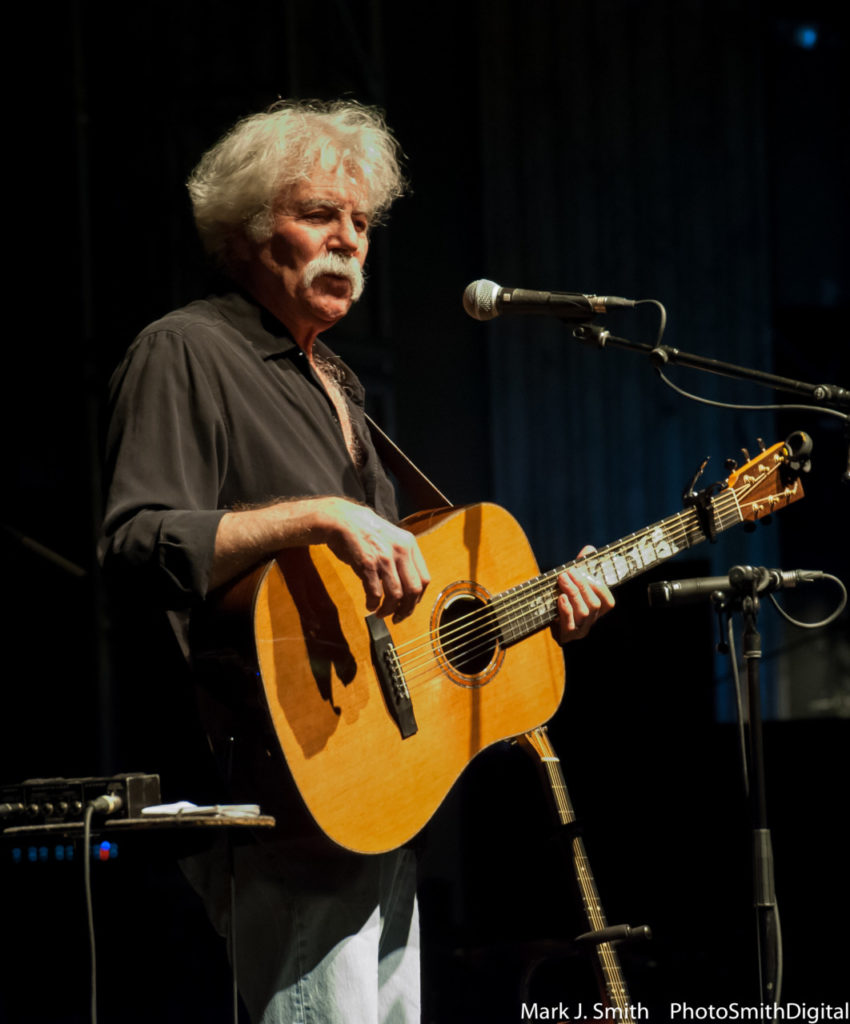
EM: Your early material was greatly influenced by the music of lowland Scotland and Appalachia? I’ve always found that connection fascinating. How did you initially tap into those genres, and how do you think the music of Great Britain manifests itself in American folk music?
TR: Well, the tradition was transplanted in the form of actual people who came over and populated the Appalachian Mountains. There were pockets of people who were still speaking the dialects of Scotland. So the music came over and survived with the people. Having studied it and being an academic on one level, I define folk music as being traditional music handed down from generation to generation. Songs like “Barbara Allen,” there’s no one correct version, there’s a thousand different variants, and they’re all equally valid. You learned it from your grandmother, and maybe if you couldn’t remember a verse or a line, you’d make up something to go in its place. So the songs were living things really growing and propagating. This really only happens in illiterate populations, because once people learn how to write, then they write it down and it doesn’t change anymore. It becomes fixed. Anyway, I think the music came over with actual living people and grew and flourished in certain populations, especially isolated ones.
The same thing happened with the blues. There are a lot of floating verses; they’d take what was the best and most compelling. So after a couple of generations you’d have some really good stuff, because it’s just the stuff that’s memorable that survives.
EM: How do you think things transformed from being the music that immigrants brought to being uniquely American? I guess it was that process of handing down, and as you say, keeping the best?
TR: Right, and the songs would also grow to be more relevant to people’s current lives; they’d add lines that had to do with, maybe, who was president at the time. So the songs were organic things; they would grow and multiply. It was interesting in Cambridge to have a bunch of Harvard students sitting around singing about how rough it was in the coal mines, but we figured we could make up in sincerity what we lacked in authenticity. [Laughs]
EM: I know you live in Massachusetts and have a farm in New Hampshire. How does physical location affect your songwriting?
TR: I think being in Jackson Hole, Wyoming, the physical presence of the mountains and the sage plains and the wildlife is really imposing. I think what’s more important is the culture of the community in which you’re living. It’s always been striking, Mike, that adjoining towns can have very different personalities. Did you ever notice that?
EM: Most definitely!
TR: It’s a curious thing. I used to play a club for two weeks, same town, same time of day, same demographics, but the audience from night to night would be totally different. I’m not sure why that happens, but it’s a curious thing. But that has absolutely nothing to do with what we’re talking about. [Laughs]
EM: Well, it ties into performance and reading your audience, which, as an aspiring singer/songwriter is something I’ve always wondered about.
TR: My M.O. is actually to visualize the audience as a single person; sometimes it’s a bit of a schizophrenic person, but in the first few songs I’m trying to figure out who this person is, what they like, and what buttons to push to get them engaged. And then for the rest of the night I’m playing to that person. There’s always one or two people who aren’t with the program, talking, yelling out requests for songs I never recorded. Though that doesn’t happen very much; it’s more likely songs that I don’t remember. [Laughs]
EM: I imagine as you travel the country and the world, you pick up on different energies from the audience. How do you see things these days given the extreme polarization of recent politics and the outcome of all that? Are there places where you feel that your music resonates more than others?
TR: My home base is really the Northeast, from Bangor down to Washington, D.C., because it has the highest concentration of colleges here. When I was starting out, it was the college audiences I was playing to. I go to the Midwest, the Northwest, Florida on a regular basis. I don’t do much in the south except Atlanta and Asheville. I think it has to do with the college population. Most of my crowd is college educated, so that’s kind of the thread.
In terms of the politics, I try to create kind of a little oasis from the problems of the world. So I don’t tend to get political, because I really don’t want to remind people of how much things suck. I’d rather give them a little holiday from all the turmoil. On the other hand, there are times when I just can’t help myself and have to comment on something. I’ve been saying lately that there are aspects of the recent election cycle that make you realize we really have to spend more on education. You can make of that what you will. There are people in the audience who will either agree or disagree with me if I were to do that, so why go there?
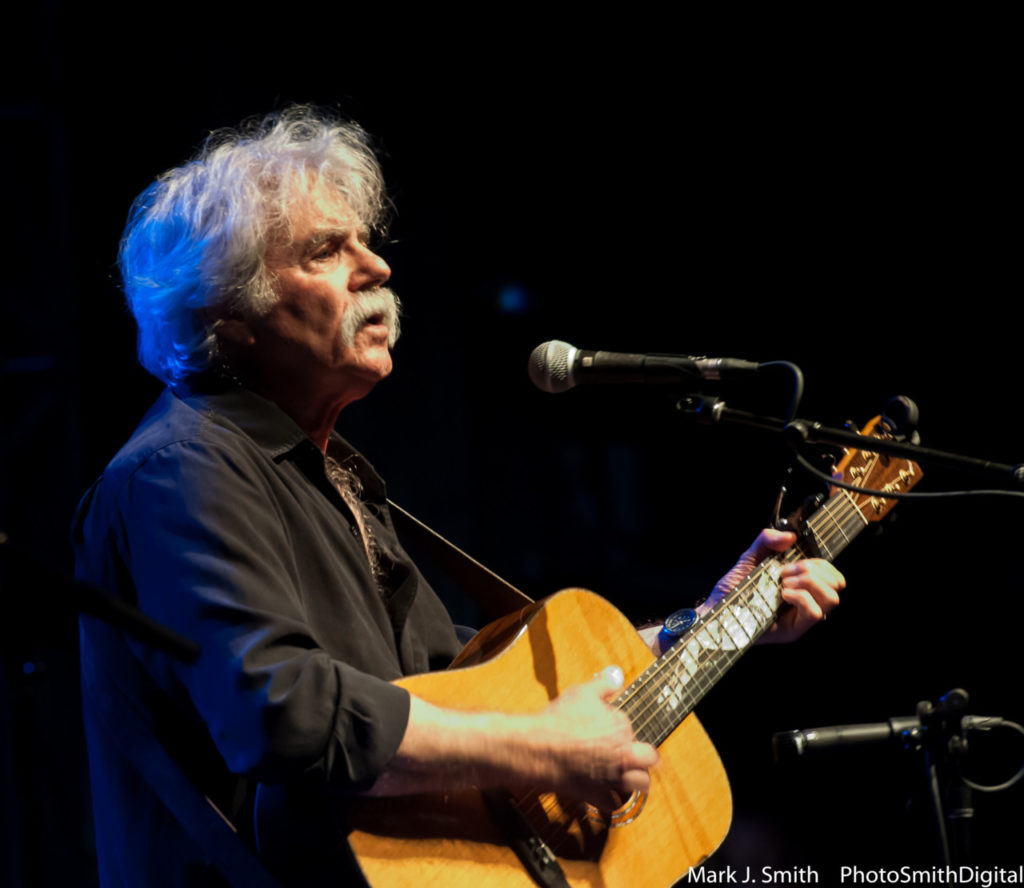
EM: And I suppose it’s also a risk if songs are overly topical. It locks it into a place and time. A song can have a longer lasting appeal if it’s not as topical.
TR: Well, the preachy songs don’t work, because you’re either preaching to the choir or those who aren’t going to be converted regardless. But this is where the genius of Woody Guthrie shines through. I can take a song like “Plane Crash At Los Gatos” and anybody can relate to it because it humanizes tragedy. Once you put a face and a name on a problem, then people can relate to it and then maybe start thinking about what’s at stake in this particular issue.
EM: Excellent point.
TR: Also check out a version by Sweet Honey In The Rock.
EM: I just saw Shawn Colvin perform with Steve Earle at Town Hall in New York City on Monday night, which was a really great. I know you’ve worked with her and have helped cultivate new talent. What sparks your interest in newer performers?
TR: I started doing these shows some years ago in the ’80s. I called them Club 47 Concerts, in reference to the coffee house where I got my start. I try to make them a mix of established artists and newcomers, but nobody’s heard of them yet. It gives them a platform to launch from. It’s very hard to work your way out of the house concert, small club circuit into the wider stage.
The show at The Schimmel Center has two whippersnappers on it. Matt Nakoa, who I encountered in the studio, sings like an angel, is monster keyboard player and writes great songs. He’s got classic, blues, rock ‘n’ roll chops and anything you can mention he can play almost better than anyone you’ve ever heard. And he’s cute. So the ladies tell me. Why I get this guy onstage with me, I don’t know. And there’s another kid named Seth Glier, who’s equally talented, and will be appearing with sax player Joe Nearny. They’ll be doing their own things as well; it should be a very interesting evening. To have both of them onstage is very exciting.
EM: Where do you find inspiration these days?
TR: Oh, it’s all over the place. I don’t actually know where the songs come from. I find I have to put my brain in neutral and see what drifts by. Very often things just arrive when I’m half asleep, or not paying attention, or thinking about something else altogether. Some little bit of melody or a line or two will float by, and if I have the presence of mind, I’ll grab a pen or a phone and record the melody, because they evaporate very quickly if you don’t do that. And if I take that little snippet and play with it for a while, it reveals itself more fully, and then I can figure out—oh, that’s what the next chord should be. For me, it’s like trying to tune in a distant radio station that kind of fades in and out. My feeling is that the song already exists, I just try to tease it out of its dimension into this dimension. Sometimes it works, sometimes it doesn’t.
EM: What comes first, words or melody?
TR: There’s no hard & fast rule, but usually a snippet of melody, or it could be a few words that imply a melody. I try to develop the music part ahead of the words, on the theory that there are a lot of great songs out there with dumb words, but there are no great songs with dumb music. Music is something you feel; the words are something you have to think about. Feeling is an instant connection, whereas the thinking part takes a while. It’s all about feeling and connecting emotionally with another human being.
EM: How do you think your approach and style has evolved over time?
TR: It’s gotten simpler, and I mean that in a good way. I recently did this, and audiences seem to like it a lot, especially if it’s fun. Having said that, I also wrote a pretty heavy, philosophical song recently called “Voices”; the audience tends to sit there when it’s over, which I take as emotional applause.
I’ve actually been writing quite a bit lately; I think I could make an album entirely of my stuff, which would be really interesting. I’ve never done that. I really enjoy other people’s songs– it’s essential when doing that to do them in a different way. But I’ve never written so many songs in a fairly short period of time. I think I might go down to Nashville and record an entire album.
EM: To what do you attribute the recent surge of creativity?
TR: I’m not sure… life has been kind of stressful for the last couple of years. Maybe it has to do with escapism from the real world and the need to bury myself in my own little musings.
For more information about Tom Rush, visit his website or connect with him on Facebook.


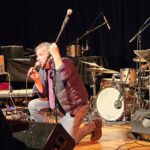
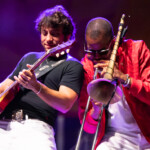

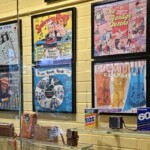

Be the first to comment!